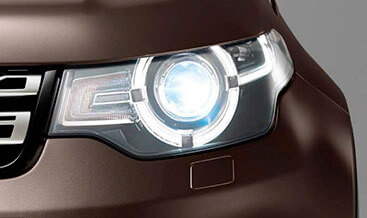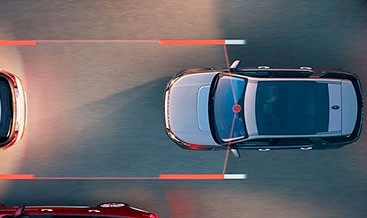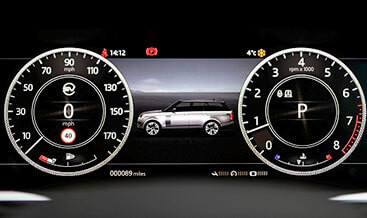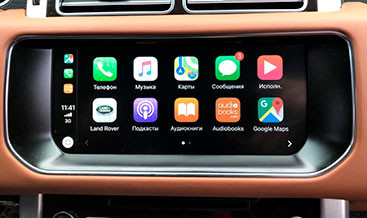Discovery Sport Auto High Beam Assist: Enhance Night Driving

Discovery Sport Auto High Beam Assist (AHBA) significantly improves nighttime driving safety and convenience, and at CARDIAGTECH.NET, we offer seamless activation solutions. Upgrade your driving experience with this advanced lighting technology. Explore automated headlight control and intelligent lighting systems.
1. Understanding Discovery Sport Auto High Beam Assist
Discovery Sport Auto High Beam Assist (AHBA) is an advanced driver-assistance system designed to maximize visibility and safety during nighttime driving. This system intelligently manages the vehicle’s high beam headlights, automatically switching between high and low beams based on the presence of other vehicles. By eliminating the need for manual adjustments, AHBA allows drivers to focus more on the road, enhancing overall driving comfort and reducing the risk of accidents.
1.1. How AHBA Works
The AHBA system utilizes a forward-facing camera, typically mounted near the rearview mirror, to monitor the road ahead. This camera detects the headlights of oncoming vehicles and the taillights of vehicles traveling in the same direction. Based on this information, the system’s control unit determines whether to activate or deactivate the high beams.
- Detection of Oncoming Vehicles: When the camera detects headlights from an oncoming vehicle, the system smoothly dims the high beams to avoid blinding the other driver.
- Detection of Leading Vehicles: Similarly, if the camera detects taillights of a vehicle ahead in the same lane, the high beams are dimmed to prevent glare.
- Automatic Restoration: Once the other vehicles have passed or are no longer within range, the system automatically restores the high beams, providing maximum illumination of the road ahead.
1.2. Benefits of AHBA
The benefits of using AHBA in your Discovery Sport are substantial, contributing to both safety and convenience:
- Enhanced Safety: AHBA ensures optimal visibility during nighttime driving, reducing the risk of accidents caused by insufficient lighting. By automatically adjusting the headlights, the system helps drivers react more quickly to potential hazards.
- Improved Comfort: Drivers no longer need to manually switch between high and low beams, reducing eye strain and fatigue, especially on long drives.
- Reduced Distraction: With AHBA managing the headlights, drivers can maintain better focus on the road and surrounding conditions.
- Optimized Lighting: The system provides the best possible lighting for any given situation, ensuring that the road ahead is always adequately illuminated without causing inconvenience to other drivers.
2. Key Components of the AHBA System
The Discovery Sport AHBA system integrates several key components that work together to deliver its intelligent lighting control. These components include the forward-facing camera, the control unit, and the headlight assembly.
2.1. Forward-Facing Camera
The forward-facing camera is the “eye” of the AHBA system. It is typically a high-resolution camera capable of capturing clear images even in low-light conditions.
- Function: The camera captures the visual data needed to detect other vehicles and ambient lighting conditions.
- Location: It is usually mounted near the rearview mirror, providing an unobstructed view of the road ahead.
- Technology: Modern cameras use advanced image processing algorithms to differentiate between headlights, taillights, and other light sources, ensuring accurate detection.
2.2. Control Unit
The control unit is the “brain” of the AHBA system. It processes the data received from the camera and makes decisions about when to switch the high beams on or off.
- Function: The control unit analyzes the camera’s input and controls the headlight assembly based on pre-programmed logic and algorithms.
- Processing Power: It requires significant processing power to analyze images in real-time and make quick decisions.
- Integration: The control unit is typically integrated with the vehicle’s central electronic system, allowing it to communicate with other systems and receive updates.
2.3. Headlight Assembly
The headlight assembly includes the physical components that produce and direct the light. Modern systems often use LED technology for enhanced brightness and energy efficiency.
- Function: The headlight assembly provides both high and low beam illumination, switching between them as directed by the control unit.
- Technology: LED headlights offer several advantages, including brighter light output, longer lifespan, and lower energy consumption compared to traditional halogen bulbs.
- Adaptive Systems: Some advanced headlight assemblies can also adjust the direction and intensity of the light beam based on steering input and vehicle speed, further enhancing visibility.
3. Installing and Activating AHBA in Your Discovery Sport
Adding AHBA to your Discovery Sport involves both hardware installation and software activation. The process can vary depending on whether your vehicle was originally equipped with the necessary hardware.
3.1. Checking for Hardware Compatibility
Before attempting to install AHBA, it’s essential to verify that your Discovery Sport has the required hardware components, particularly the forward-facing camera.
- Visual Inspection: Check for the presence of a camera unit mounted near the rearview mirror.
- Vehicle Configuration: Consult your vehicle’s configuration data or build sheet to determine if the forward-facing camera was included as an option.
- Professional Assessment: If you are unsure, a qualified technician at CARDIAGTECH.NET can perform a diagnostic check to confirm hardware compatibility. Contact us at +1 (641) 206-8880 for assistance.
3.2. Hardware Installation
If your Discovery Sport does not have the necessary hardware, you will need to install it. This typically involves installing the forward-facing camera and possibly upgrading the headlight assembly.
- Camera Installation: The camera unit must be installed in the correct location and properly connected to the vehicle’s electrical system.
- Wiring and Connections: Ensure all wiring harnesses and connectors are securely attached and properly routed to prevent damage.
- Professional Installation: Due to the complexity of the installation process, it is highly recommended to have the hardware installed by a qualified technician at CARDIAGTECH.NET.
3.3. Software Activation
Once the hardware is installed, the AHBA system needs to be activated through software programming. This typically involves using diagnostic tools to enable the feature in the vehicle’s control unit.
- Diagnostic Tools: Specialized diagnostic tools are required to access the vehicle’s electronic control unit (ECU) and modify its settings.
- Software Configuration: The AHBA feature must be enabled in the ECU, and any necessary parameters must be configured correctly.
- Remote Activation: CARDIAGTECH.NET offers remote activation services, allowing you to activate AHBA from the comfort of your own home. You will need a laptop, an ENET cable, and a stable internet connection.
 Forward facing camera used by Auto High Beam Assist
Forward facing camera used by Auto High Beam Assist
3.4. Step-by-Step Activation Process with CARDIAGTECH.NET
CARDIAGTECH.NET provides a straightforward process to activate AHBA on your Discovery Sport:
- Verify Compatibility: Send your Vehicle Identification Number (VIN) to CARDIAGTECH.NET to ensure compatibility.
- Order Online: Confirm your order through PayPal for secure payment processing.
- Install TeamViewer: Download and install TeamViewer on your laptop. Provide CARDIAGTECH.NET with your TeamViewer ID and password for remote access.
- Connect Hardware: Ensure your vehicle’s ignition is ON, and connect the ENET adapter to your car’s OBD2 port and your laptop.
- Remote Activation: A CARDIAGTECH.NET technician will remotely access your vehicle’s system to activate AHBA.
- Enjoy Enhanced Safety: Once activated, you can enjoy the improved comfort and safety of AHBA during nighttime driving.
4. Troubleshooting Common AHBA Issues
Like any complex system, AHBA can sometimes experience issues. Here are some common problems and potential solutions:
4.1. System Not Activating
If the AHBA system is not activating, there could be several reasons:
- Camera Obstruction: Ensure the forward-facing camera is clean and free from obstructions such as dirt, snow, or ice.
- Sensor Malfunction: The camera or other sensors may be malfunctioning. A diagnostic scan can help identify any fault codes.
- Software Glitches: Software glitches can sometimes prevent the system from activating. Try restarting the vehicle or performing a system reset.
- Incorrect Settings: Verify that the AHBA feature is enabled in the vehicle’s settings menu.
4.2. Erratic Behavior
Erratic behavior, such as the high beams switching on and off unexpectedly, can be caused by:
- Calibration Issues: The camera may need to be recalibrated to ensure accurate detection of other vehicles.
- Environmental Factors: Heavy rain, fog, or snow can interfere with the camera’s ability to detect vehicles accurately.
- System Errors: Underlying system errors may cause erratic behavior. A diagnostic scan can help identify the root cause.
4.3. False Detections
False detections, where the system dims the high beams even when there are no other vehicles present, can be caused by:
- Reflective Surfaces: Reflective surfaces such as road signs or streetlights can sometimes be mistaken for headlights or taillights.
- Sensor Sensitivity: The sensitivity of the camera may be set too high, causing it to detect even faint light sources.
- Software Bugs: Software bugs can sometimes cause false detections. Updating the system software may resolve the issue.
4.4. Diagnostic Tools for Troubleshooting
Several diagnostic tools can help troubleshoot AHBA issues:
- OBD-II Scanners: These scanners can read fault codes from the vehicle’s ECU, providing valuable information about potential problems.
- Specialized Diagnostic Software: Software such as JLR SDD (Jaguar Land Rover Symptom Driven Diagnostics) provides advanced diagnostic capabilities and allows technicians to perform system calibrations and software updates.
- Multimeters: Multimeters can be used to check the voltage and continuity of wiring harnesses and connectors, helping to identify electrical issues.
4.5. Professional Support from CARDIAGTECH.NET
If you are experiencing persistent AHBA issues, CARDIAGTECH.NET offers professional support to diagnose and resolve the problem.
- Remote Diagnostics: Our technicians can perform remote diagnostics to identify the root cause of the issue.
- On-Site Support: We also offer on-site support at our location in City of Orange, NJ, where our skilled technicians can perform hands-on troubleshooting and repairs.
- Contact Us: Reach out to us via WhatsApp at +1 (641) 206-8880 or visit our website at CARDIAGTECH.NET for expert assistance. Our address is 276 Reock St, City of Orange, NJ 07050, United States.
5. Maintaining Your AHBA System
Proper maintenance is essential to ensure the long-term reliability and performance of your AHBA system.
5.1. Regular Cleaning
Keep the forward-facing camera clean and free from dirt, dust, and debris. Use a soft, damp cloth to gently clean the camera lens.
5.2. Software Updates
Keep the vehicle’s software up to date. Software updates often include bug fixes and performance improvements that can enhance the reliability of the AHBA system.
5.3. Professional Inspections
Schedule regular inspections with a qualified technician at CARDIAGTECH.NET to check the overall health of the system. Technicians can perform diagnostic scans and identify potential issues before they become major problems.
5.4. Checking Wiring and Connections
Inspect wiring harnesses and connectors for damage or corrosion. Ensure that all connections are secure and properly routed.
5.5. Calibration
Recalibrate the camera as needed. If you notice any issues with the system’s accuracy or performance, recalibration may be necessary.
6. AHBA and Road Safety
AHBA significantly contributes to road safety by enhancing visibility and reducing driver fatigue.
6.1. Statistics on Nighttime Accidents
Nighttime driving is inherently more dangerous than daytime driving. According to the National Highway Traffic Safety Administration (NHTSA), fatal crash rates are three times higher at night compared to the day. Factors such as reduced visibility, fatigue, and impaired drivers contribute to this increased risk.
- NHTSA Data: NHTSA reports that approximately half of all traffic fatalities occur at night.
- Visibility Challenges: Reduced visibility makes it harder for drivers to see pedestrians, cyclists, and other vehicles, increasing the risk of accidents.
- Driver Fatigue: Driver fatigue is more common at night, further impairing reaction times and decision-making abilities.
6.2. How AHBA Reduces Accidents
AHBA helps reduce accidents by:
- Improving Visibility: AHBA ensures that the road ahead is always adequately illuminated, allowing drivers to see potential hazards sooner.
- Reducing Glare: By automatically dimming the high beams when other vehicles are present, AHBA reduces glare and prevents blinding other drivers.
- Minimizing Distraction: AHBA eliminates the need for manual headlight adjustments, allowing drivers to focus more on the road.
- Enhancing Reaction Time: With improved visibility and reduced distraction, drivers can react more quickly to changing road conditions.
6.3. Real-World Examples
Numerous studies and real-world examples demonstrate the effectiveness of AHBA in reducing accidents:
- Insurance Institute for Highway Safety (IIHS): IIHS studies have shown that vehicles equipped with AHBA have lower nighttime crash rates compared to those without the system.
- Driver Testimonials: Many drivers report feeling safer and more confident when driving at night with AHBA.
- Fleet Studies: Fleet studies have shown that AHBA can significantly reduce the number of nighttime accidents involving commercial vehicles.
7. Comparing AHBA to Other Lighting Systems
AHBA is just one of several advanced lighting systems available in modern vehicles. Here’s how it stacks up against other technologies:
7.1. Traditional High Beams
Traditional high beams provide maximum illumination of the road ahead but require manual activation and deactivation.
- Pros: Simple, reliable, and provide excellent visibility in dark conditions.
- Cons: Require manual adjustment, which can be distracting and lead to glare for other drivers.
7.2. Automatic Headlights
Automatic headlights automatically switch on and off based on ambient lighting conditions but do not control the high beams.
- Pros: Convenient and ensure that headlights are always on when needed.
- Cons: Do not provide automatic high beam control, requiring manual adjustment in dark conditions.
7.3. Adaptive Headlights
Adaptive headlights adjust the direction and intensity of the light beam based on steering input and vehicle speed.
- Pros: Provide enhanced visibility around corners and in changing road conditions.
- Cons: Do not automatically control the high beams, requiring manual adjustment.
7.4. Matrix LED Headlights
Matrix LED headlights use multiple individually controlled LED elements to create a dynamic light pattern that can adapt to changing road conditions.
- Pros: Provide precise control over the light beam, allowing for selective dimming and enhanced visibility.
- Cons: Can be more expensive and complex than other lighting systems.
7.5. AHBA vs. Other Systems
AHBA offers a unique combination of features that make it particularly effective in enhancing nighttime driving safety and convenience.
| Feature | AHBA | Traditional High Beams | Automatic Headlights | Adaptive Headlights | Matrix LED Headlights |
|---|---|---|---|---|---|
| Automatic High Beam Control | Yes | No | No | No | Yes |
| Enhanced Visibility | Yes | Yes | Yes | Yes | Yes |
| Reduced Glare | Yes | No | No | No | Yes |
| Convenience | Yes | No | Yes | Yes | Yes |
8. The Future of Automotive Lighting
Automotive lighting technology is constantly evolving, with new innovations emerging all the time.
8.1. Laser Headlights
Laser headlights offer even greater brightness and range than LED headlights. They use lasers to excite a phosphor material, which then emits a bright, white light.
- Advantages: Extremely bright, long-range illumination.
- Challenges: High cost, complex technology.
8.2. Digital Light
Digital Light technology uses millions of micro-mirrors to project light onto the road, creating highly precise and customizable light patterns.
- Advantages: Extremely precise light control, can project symbols and information onto the road.
- Challenges: High cost, complex technology.
8.3. Integrated Sensor Systems
Future lighting systems will likely be integrated with other sensor systems, such as radar and lidar, to provide even more comprehensive information about the surrounding environment.
- Advantages: Enhanced awareness of the road ahead, improved safety.
- Challenges: Complex integration, high cost.
8.4. Impact on AHBA
As automotive lighting technology continues to advance, AHBA will likely evolve to incorporate these new innovations. Future AHBA systems may use more advanced sensors and algorithms to provide even more precise and reliable high beam control.
9. Legal Considerations
It is important to be aware of the legal considerations related to AHBA and other advanced lighting systems.
9.1. Regulations
Regulations regarding headlight use vary by jurisdiction. Some regions have specific laws regarding the use of high beams and the operation of automatic high beam control systems.
- Local Laws: Check local laws and regulations regarding headlight use.
- Compliance: Ensure that your AHBA system complies with all applicable regulations.
9.2. Liability
In the event of an accident, you may be held liable if your headlights are not functioning properly or if you are using them in a way that violates local laws.
- Proper Maintenance: Maintain your AHBA system in good working order.
- Responsible Use: Use your headlights responsibly and in accordance with local laws.
9.3. Insurance
Your insurance coverage may be affected if your headlights are not functioning properly or if you are using them in a way that violates local laws.
- Coverage Requirements: Review your insurance policy to ensure that you have adequate coverage for headlight-related accidents.
- Policy Updates: Update your insurance policy as needed to reflect any changes to your vehicle’s lighting system.
10. Why Choose CARDIAGTECH.NET for AHBA Activation?
CARDIAGTECH.NET is your trusted partner for AHBA activation and automotive technology solutions.
10.1. Expertise
Our team of skilled technicians has extensive experience in automotive electronics and software programming. We are experts in AHBA activation and can ensure that your system is installed and configured correctly.
10.2. Quality Products
We offer only the highest quality products and components, ensuring that your AHBA system is reliable and performs as expected.
10.3. Customer Support
We provide exceptional customer support, answering your questions and addressing your concerns promptly and professionally.
10.4. Remote Activation Services
Our remote activation services make it easy to activate AHBA from the comfort of your own home. You don’t need to bring your vehicle to our shop – we can do it all remotely.
10.5. Contact Information
Contact CARDIAGTECH.NET today to learn more about our AHBA activation services:
- Address: 276 Reock St, City of Orange, NJ 07050, United States
- WhatsApp: +1 (641) 206-8880
- Website: CARDIAGTECH.NET
FAQ About Discovery Sport Auto High Beam Assist
- What is Auto High Beam Assist (AHBA)?
AHBA is an advanced driver-assistance system that automatically switches between high and low beams based on the presence of other vehicles. - How does AHBA improve driving safety?
AHBA enhances visibility, reduces glare, and minimizes distraction, allowing drivers to react more quickly to potential hazards. - What are the key components of the AHBA system?
The key components include a forward-facing camera, a control unit, and the headlight assembly. - How can I check if my Discovery Sport is compatible with AHBA?
Check for the presence of a forward-facing camera near the rearview mirror or consult your vehicle’s configuration data. You can also contact CARDIAGTECH.NET with your VIN. - Can CARDIAGTECH.NET activate AHBA remotely?
Yes, CARDIAGTECH.NET offers remote AHBA activation services. - What do I need for remote AHBA activation?
You will need a laptop, an ENET cable, a stable internet connection, and TeamViewer installed. - What are some common issues with AHBA systems?
Common issues include the system not activating, erratic behavior, and false detections. - How can I troubleshoot AHBA issues?
Check for camera obstructions, perform a diagnostic scan, and ensure that the system settings are correct. - Why should I choose CARDIAGTECH.NET for AHBA activation?
CARDIAGTECH.NET offers expertise, quality products, exceptional customer support, and convenient remote activation services. - How can I contact CARDIAGTECH.NET for assistance?
You can reach CARDIAGTECH.NET via WhatsApp at +1 (641) 206-8880 or visit our website at CARDIAGTECH.NET. Our address is 276 Reock St, City of Orange, NJ 07050, United States.
Don’t compromise on safety and convenience. Contact CARDIAGTECH.NET today to activate Auto High Beam Assist on your Discovery Sport and experience the benefits of intelligent lighting technology. Our experts are ready to provide you with seamless installation and activation services. Contact us now at +1 (641) 206-8880 or visit CARDIAGTECH.NET for more information and to schedule your AHBA activation.





